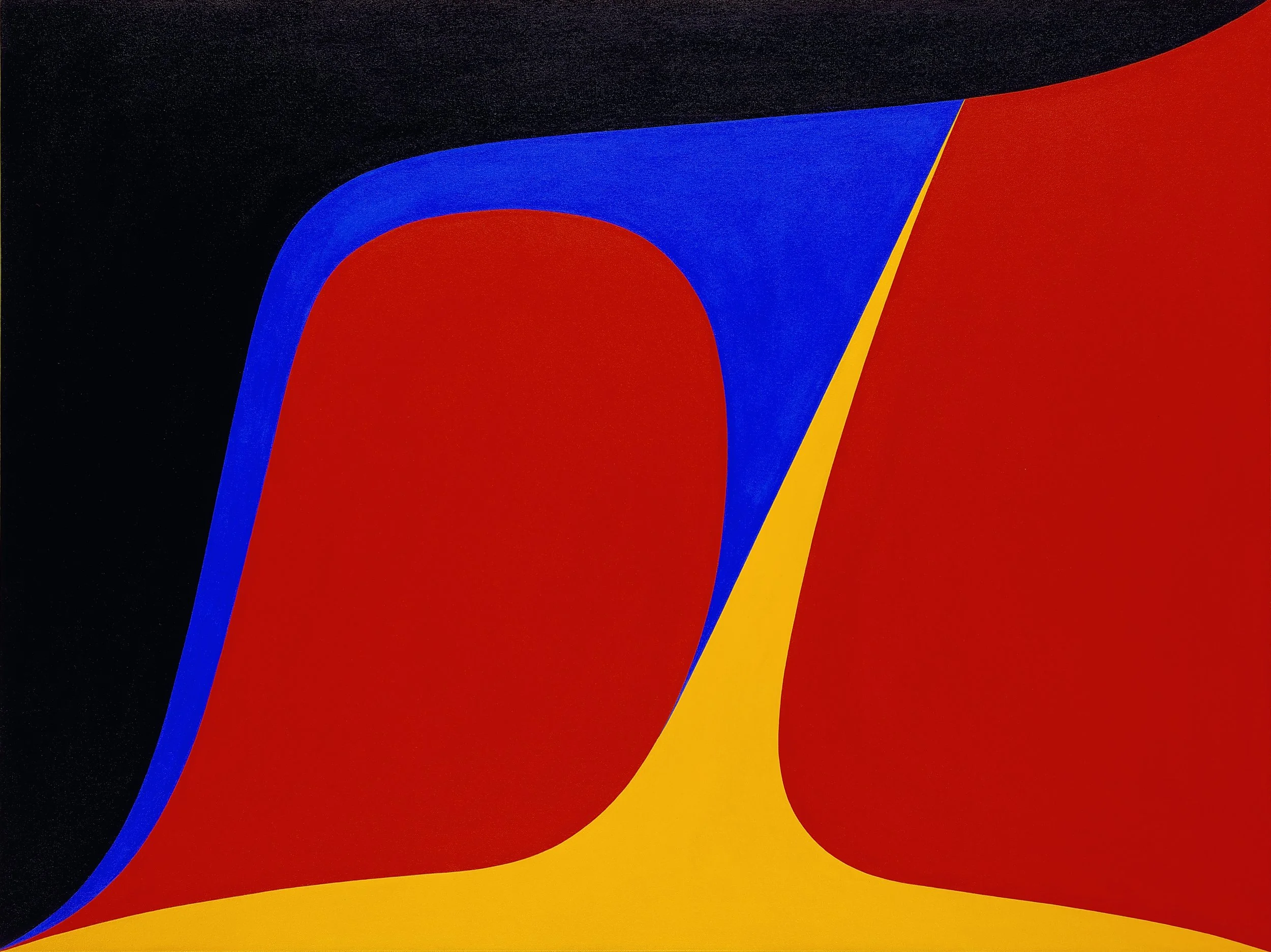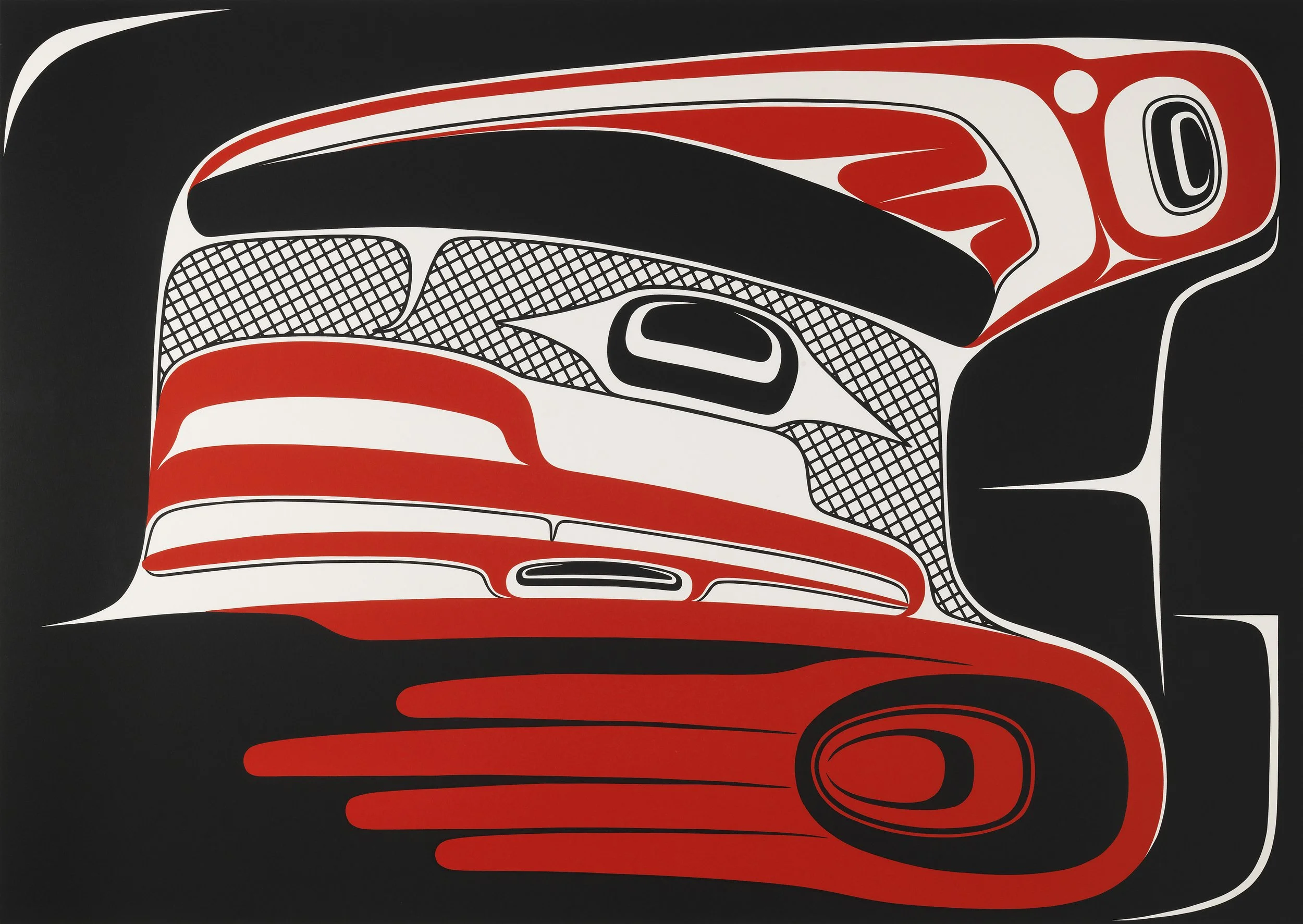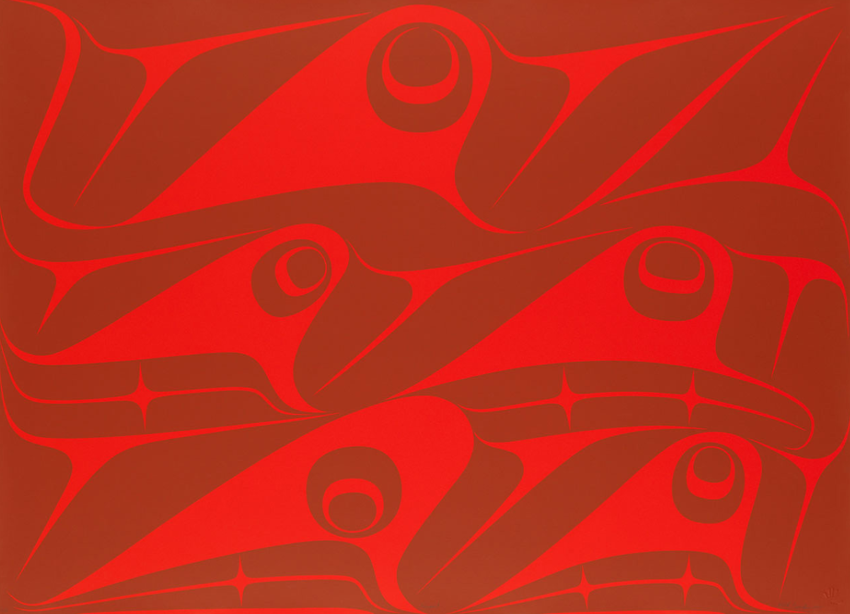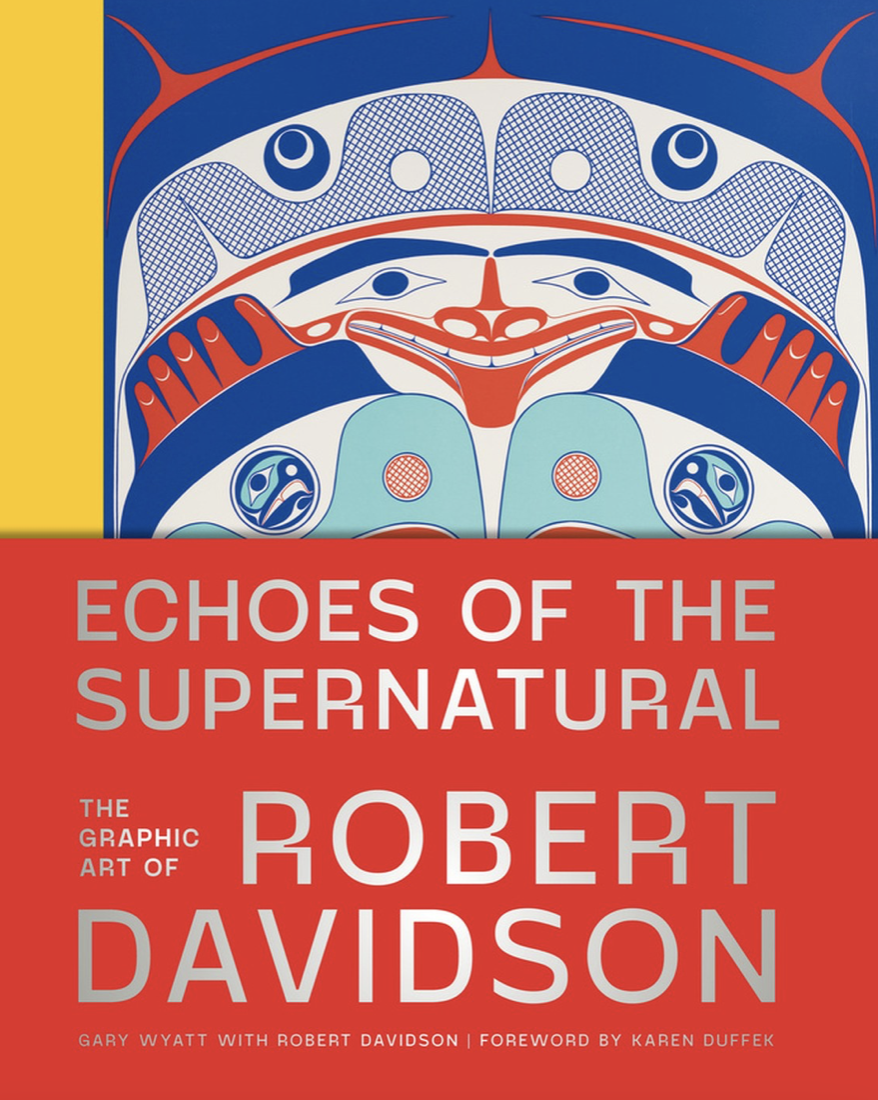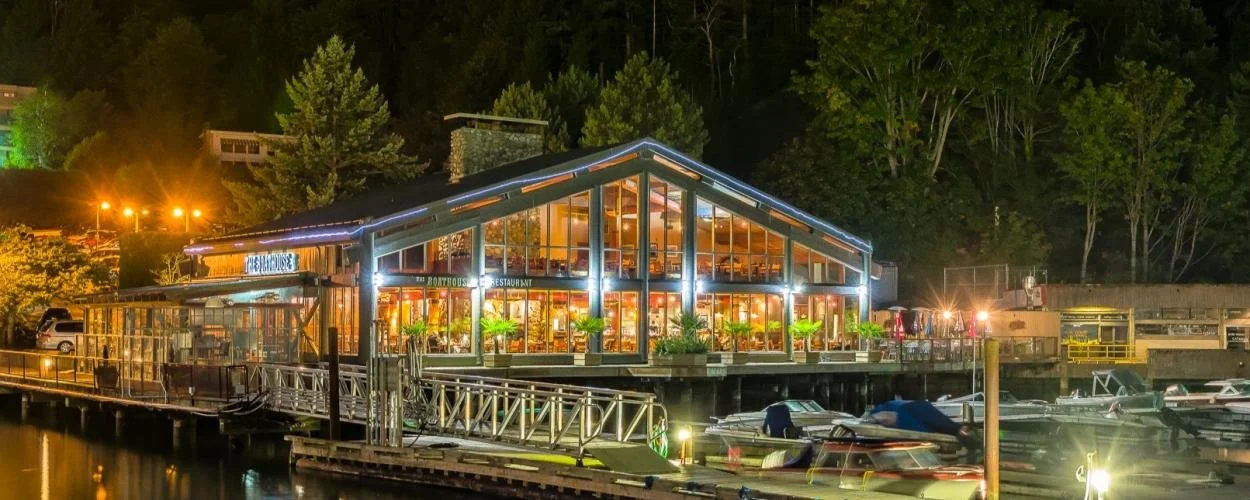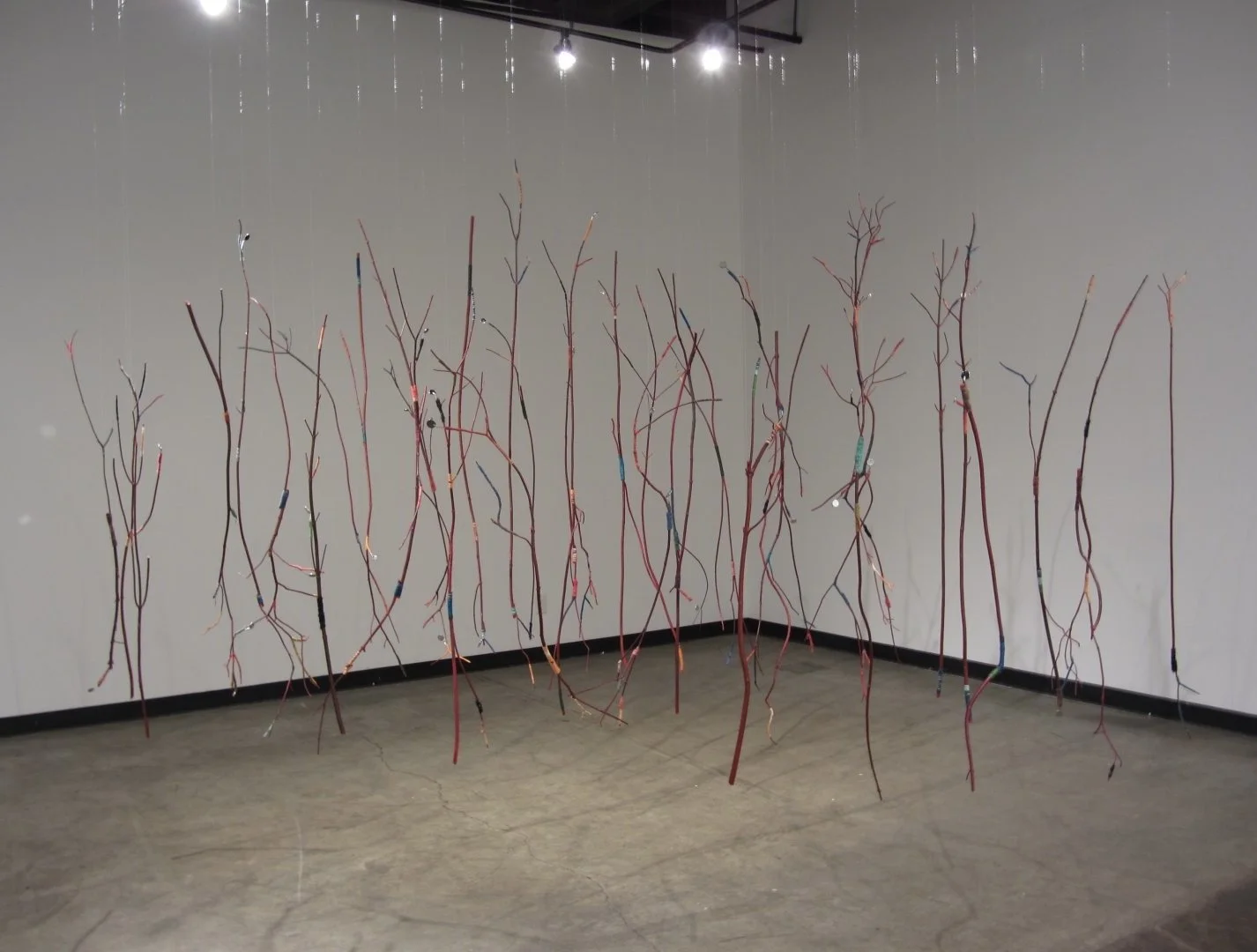Haida artist Robert Davidson shares cultural pride in monumental new exhibition at Vancouver Art Gallery
The Northwest Coast artist of Haida and Tlingit descent is featured in Guud San Glans Robert Davidson: A Line That Bends But Does Not Break
Robert Davidson, Untitled, 2013, acrylic on canvas, courtesy of the artist, Photo by Kenji Nagai
Vancouver Art Gallery presents Guud San Glans Robert Davidson: A Line That Bends But Does Not Break to April 16, 2023
NORTHWEST COAST VISUAL ARTIST Robert Davidson, who is of Haida and Tlingit descent, is renowned for several reasons, not least of which are the fine technical and innovative aspects of his work. He’s also revered for the role he has played in revitalizing Northwest Coast art and, by extension, his culture. What makes this all the more remarkable is hearing from the affable artist himself—the great-grandson of legendary Haida carver Charles Edenshaw—just what little connection he had to his roots for so many years while growing up in Masset in Haida Gwaii.
During a media preview of Guud San Glans Robert Davidson: A Line That Bends But Does Not Break—a monumental career-spanning exhibition of the artist’s prints, drawings, and paintings now showing at Vancouver Art Gallery—Davidson explains that it wasn’t until he was 16 years old that he heard a Haida song for the first time in his life. He had never seen a single piece of art until after he moved to Vancouver to finish high school and stepped foot inside a museum; some of the works that grabbed him were by his aforementioned famed great-grandfather. And the totem pole he carved for his home village in 1969 initially brought up almost as much anxiety for people in his community as joy.
“When I look back at seeing the old masters’ masterpieces in museums for the first time, I was absolutely blown away by the quality because I was born into a void,” Davidson said at the preview. “There was no art in the village I come from in Masset on Haida Gwaii. One of the first Native songs we were taught in elementary school was ‘One Little, Two Little, Three Little Indians’. There was no mention of any of our Haida songs at all from the schools. That’s how far removed we were.
“And when I carved the totem pole [Bear Mother] in 1969 in Masset, I didn’t realize there were a lot of people of my parents’, my grandparents’, generation who were afraid to have the totem raised for fear of going to jail,” he adds. “I didn’t hear that story until, actually, just recently. So that’s how much we were controlled by the Indian Act.”
One of Davidson’s mentors was acclaimed goldsmith, carver, and sculptor Bill Reid, who was strongly influenced by Edenshaw’s work and who guided Davidson in sculpture and design. Spend any time in Davidson’s presence and at some point he will tell you about how important the older people in his community were to him.
“I feel similarly about his generation,” said Richard Hill, the Smith Jarislowsky Senior Curator of Canadian Art at VAG and co-curator, with Mandy Ginson (VAG associate curator), of Guud San Glans Robert Davidson: A Line That Bends But Does Not Break. A critic and art historian, Hill is of Cree heritage and holds a Canada research chair in Indigenous studies at Emily Carr University of Art and Design. “I feel that they did something that made the world better for me and for my generation, and so I have enormous gratitude for that,” Hill explained at the preview.
Robert Davidson, T-Silli-AA-Lis, Raven Finned Killer Whale, 1983, screenprint on paper, Collection of the Vancouver Art Gallery, Gift of Mr. and Mrs. David Young
The exhibition, which draws on the Vancouver Art Gallery’s collection of Davidson’s work as well as paintings from private collections, takes its title from Davidson’s Haida name, Guud san glans, meaning Eagle of the Dawn, and from the suggestion that Davidson is so at home within the stylistic conventions of traditional Haida art that he is able to “bend” those mores without breaking with them. Hill explained that during the show’s curatorial process, what kept coming to his mind was the way Davidson speaks about there being a kind of alphabet of forms in the Haida visual language.
“That idea of a visual language really stuck with me while we were working on this exhibition, and it’s been a really valuable analogy for me because, as Robert says, he was born into a situation where that visual language had been radically, brutally interrupted, and he was one of the generation who brought that language back,” Hill said. “In my mind, as you go through this exhibition, you can see him working with the forms of the masters, as he says, and you can see how quickly he’s absorbing that and becoming fluent in that language to the point where he can do things with it that go beyond the kind of prosaic use of visual language to a kind of visual poetry.
“It’s designed to give you a couple of visual shocks along the way, which I hope will allow you to just share in that sense of wonder and excitement that Mandy and I had as we had got to know Robert’s work, and also I think that the gallery is already a space where people come in to kind of refresh themselves,” Hill added. “If it’s rainy and depressing, you can go into that space and just immediately feel the positive energy that Robert has put into the world over these many years.”
Robert Davidson. Photo via Figure 1 Publishing
The 1995 recipient of the National Aboriginal Achievement Award for his contribution to First Nations art and culture, Davidson is a member of the Order of British Columbia and the Order of Canada. In 2010, he received the Governor General’s Award for Visual Arts and the Audain Prize for Lifetime Achievement Award in the Visual Arts. Among the 137 striking pieces dating from the 1960s to the present in the exhibition are one of his most recent, hlGed sda sGwaansang (Two Working Together), depicting a bow and arrow; and the 2006 serigraph Split U, which he created for his wife, Haida attorney Terri-Lynn Williams-Davidson, as a nod to her Gemini sign.
Davidson described his role in the resurgence of Northwest Coast art and culture as one of not only solving the “puzzle”, but of bringing it back. “The puzzle was really to regain the knowledge of my grandparents’ generation,” Davidson said. “They were the last link to the ancient ways because my parents’ generation was the generation that was taken to—as many of you are hearing now—the residential schools, and I’m a second generation of that. My parents’ generation suffered that blow of not knowing where they came from, but fortunately my generation had a strong connection to our grandparents’ generation, which helped us to relearn and also to know the meaning of the art through ceremony, song, and dance. It [this exhibition] means a lot to me, and I know it means a lot to the Haida people.”
Davidson, who studied at Emily Carr University of Art + Design (then the Vancouver School of Art), also gleaned inspiration for his artistic practice from the replica Haida Village at UBC by Reid and Northwest Kwakwaka’wakw artist Doug Cranmer. The VAG exhibition starts out with a single carved work of Davidson’s, 2014’s Raven Fin, which is placed on the title wall as a way to point to the history of carving in Haida art while signalling the importance of colours in traditional Haida visual culture. Black and red are key themes of the show, which features many of Davidson’s preparatory drawings (being displayed for the first time), early prints, and pieces from former VAG curator Ian Thom’s vast collection of Davidson’s graphic work. (Davidson is also a master sculptor of totem poles and masks, who has painted on drums and works as a jeweller.)
As visitors make their way through A Line That Bends But Does Not Break, they see the emergence of a shift in Davidson’s style: having mastered formline’s traditional ovoid and U shapes, he began to innovate within them. There is one especially arresting space that consists almost entirely of black and red paintings that illustrate how Davidson created new forms within forms.
“We wanted to really give people a chance to kind of be set back a little bit on their heels by the drama that’s about to happen when they enter this room,” Hill said. “You can really start to see the range of innovation and the power of Robert’s work and the extent of his creativity. We’re going on a big journey, but at no point do you ever feel like you’ve left the logic of Haida art.”
Robert Davidson, Occupied, 2007, screenprint on paper, Collection of the Vancouver Art Gallery, gift of the artist
There is yet another potent turning point in Davidson’s career reflected in the exhibition, which is when he started to experiment with different colours, such as sunflower yellow, cobalt blue, and frog green; the visual effect of seeing these works together in one place is nothing short of spectacular. At the time, Davidson explained, using shades other than the traditional red and black in Haida art was unheard of.
“When I started to expand on the colours, I was really excited about a painting I did and I showed it to a friend of mine who worked in the museum in Victoria,” Davidson says. “What would have been black I had painted brown, and my friend was all excited. He said, ‘Well, that’s beautiful! It looks like it's brown!’ I said ‘It is!’” A big smile flashed across Davidson’s face. “Up to that point, people were conditioned to red and black.”
A Line That Bends But Does Not Break also gives insight into Davidson’s creative process, including his use of sketchbooks as well as templates on butcher paper that he transferred to acetate, scaling the designs up or down to fit certain canvases. There are several video and audio stations throughout the exhibition, giving visitors the chance to hear Davidson describe his approach to art in his own words and voice.
The new exhibition is not the first time Vancouver Art Gallery has highlighted Davidson’s work. He was part of 1967’s Arts of the Raven, VAG’s first major survey of Northwest Coast art, and was featured in a mid-career survey, Eagle of the Dawn, in 1993. The Vancouver Art Gallery is co-publisher of a book on Davidson’s graphics, Echoes of the Supernatural: The Graphic Art of Robert Davidson (Figure 1 Publishing) by Davidson with Gary Wyatt. (The book launch takes place as part of a free livestream talk featuring Davidson in conversation with Hill on December 5 from 6 to 7:30 pm via VAG’s Facebook page.)
Hill noted, as an aside, that Davidson has many stories about people who have unintentionally hung his paintings upside down or sideways. Davidson, who was experiencing the exhibition for the first time along with media at the preview event, clearly has as much reverence for Haida art created by those who came before him as he does for those who continue to push it forward.
“When I see my work all in one place, I think ‘Holy shit, it's time to clear a day off!’” Davidson said, that big smile coming back. “I'm really addicted to the old masters. And also I've been very influenced by my grandparents and their generation. I'm so happy that we are free. There are many, many people in the next generation who have a head start from my generation, and I’m so inspired by the work that they are doing.”
![]()



